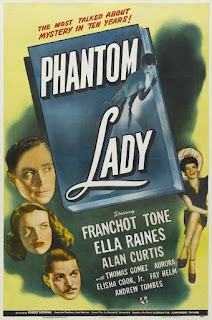Directed by John Sturges; produced by Nicholas Nayfack
In the middle of the American Civil War, and in the middle of nowhere, a group of Confederate States soldiers plan to escape from the Union fort that is their prison. Their main obstacle – aside from being in the Arizona desert hundreds of miles from anywhere – is a ruthless cavalry troop commander, Captain Roper (William Holden), whose casual ferocity has never failed to capture escapees. But the prisoners have a secret weapon, a woman (Eleanor Parker) coming to the fort for a visit. In league with the Southerners, she, however, has her own difficulties, starting with her feelings for Roper.
Considering the stars, the director and the promising premise, Escape from Fort Bravo is a big disappointment. Holden does his usual fine job, playing a tough guy with dreams, and Parker is good as the woman confused by her emotions. Able support is loaned by other familiar names and faces: John Forsythe, William Demarest, William Campbell, Richard Anderson and Polly Bergen.
But the direction is bland, surprising since Struges also directed The Great Escape and The Magnificent Seven; his final effort was the entertaining The Eagle Has Landed. Indeed, his next film after Escape from Fort Bravo was the excellent Bad Day at Black Rock. But here, much of the third reel comprises a stand-off between troopers and prisoners on the one hand and Indians on the other, and it is nowhere as tense as I suspect it was meant to be. It is, in fact, rather boring.
The real villains in Escape from Fort Bravo are the story and the script. The Confederates’ scheme to escape includes, as mentioned above, the use of an outside accomplice, who also serves to decoy Roper’s attentions. But how she was apprised of the plan and its details, we don’t know. By letter? None is mentioned. She shows up at the fort for the wedding of a friend, intending to return to Texas a day or two later. I found it incredible that someone would travel hundreds of miles by stage-coach, in the middle of a civil war, through hostile Indian country, just to stay a few days, like it was the bus-trip in It Happened One Night.
Inconsistencies abound: Anderson’s character marries Bergen’s; the former’s commanding officer hesitates to send him on an assignment because the new husband is on his honeymoon. Yet he is seen, on duty, taking a roll-call of prisoners minutes earlier. A shop-keeper visiting the fort is questioned as to why he is returning to town without cavalry escort, even though numbers of wedding guests did the same just before.
Also, when asked why the prisoners aren’t under guard (though we see guards on duty), Roper explains that there is nowhere for them to go if they escaped – even though they do try to escape. It was strange to me that, since we are told there are as many prisoners as there are Union soldiers, the Confederates don’t simply seize control of the fort; a Union station under Confederate control would not only give an excellent chance of genuine escape, and put a large supply of munitions in their hands, but surely disrupt Union communications in that region.
There is no explanation for the threatening behaviour of the Indians in the story. They are described as Mescalero, and “on their way” to join Cochise, presumably in his fight against the U.S. government, and whites in general. This is not elaborated upon, nor is it stated that the Mescalero are a tribe of Apaches, which may have clarified matters somewhat. The revolt of the Apaches seems to be general knowledge, yet a small train of four wagons loaded with rifles - surely a prize to anyone in rebellion - travels without escort through hostile districts. For their part, the Indians’ notion of attack appears limited initially to riding at speed past a well-armed enemy. They later exhibit some ingenuity in hitting targets with their arrows, but I can’t see the intelligent and imaginative Cochise thinking these countrymen would be a particularly bright addition to his cause.
There is, as well, the small detail and big coincidence of Roper apparently having been raised in Arizona, joining the U.S. Army and finding the Federal cavalry regiment to which he belongs posted back to his home territory, while a million Northern soldiers are needed far to the east in the Civil War. It would have been better to have had him an officer in a local Arizona volunteer unit, kept in the land they knew, to guard the frontier during the current war.
Add to this the behaviour of the characters, which I felt was more appropriate for the 1950s than the 1860s, and the fact that the man who seems the senior officer of the prisoners is seeking to escape before almost all the others (perhaps I think too much of the form and protocol of World War Two POW-escape films), and the movie becomes just a costume drama: modern characters in fancy-dress.
The story is so terribly inconsistent, and the script half-hearted, that any other qualities Escape from Fort Bravo may have are lost in a mire of silliness and muddle. Consider watching some of Holden and Sturges’s other works instead.




































